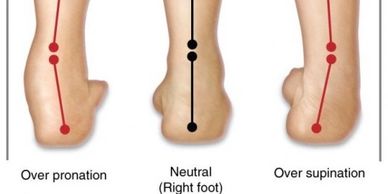Common Orthopedic Issues
Excessive Motion of the Foot
Metatarsalgia / Morton's Neuroma
Metatarsalgia / Morton's Neuroma

Everyone PRONATES and SUPINATES when they walk. If you have too much of either motion, it may cause problems with your feet, ankles, knees, hips, etc. The way our foot hits the ground determines how the rest of our joints are going to compensate for our foot motion.
Metatarsalgia / Morton's Neuroma
Metatarsalgia / Morton's Neuroma
Metatarsalgia / Morton's Neuroma

Metatarsalgia is a constant pain in the forefoot, by the 'ball' of you foot. Neuromas are typically felt between the 2nd/3rd or 3rd/4th toe area and is often descrived as a more 'sharp' pain. This can cause a person to walk with an antalgic (pain avoiding) gait. Orthotics can help offload a neuroma
Siacica
Metatarsalgia / Morton's Neuroma
Siacica

Compression on the Siatic Nerve can present as pain from the foot all the way up to the lower back. Often, the position of your feet and legs has an effect on this nerve. Orthotics realign your kinetic chain to encourage better posture, relieving the compression stress on the siatic nerve
Edema
Vericose Veins
Siacica

When you press on the skin tissue and an indent stays behind, this may be a sign of Edema. Graduated compression stockings help to control edema swelling, when they are worn correctly.
Vericose Veins
Vericose Veins
Vericose Veins

Those bumpy blueish veins tell us that somewhere in your leg, the valves that control blood flow are failing. Stockings help to reduce the strain on your venous system by compressing together the valves that control the direction of blood flow.
Knee Pain
Vericose Veins
Vericose Veins

Knee pain can be caused by a variety of problems, including arthritic changes, improper gait and traumatic injury. Often an orthotic is used to re-align your lower limbs to relieve knee strain. Occasionally, a knee brace is required for offloading.